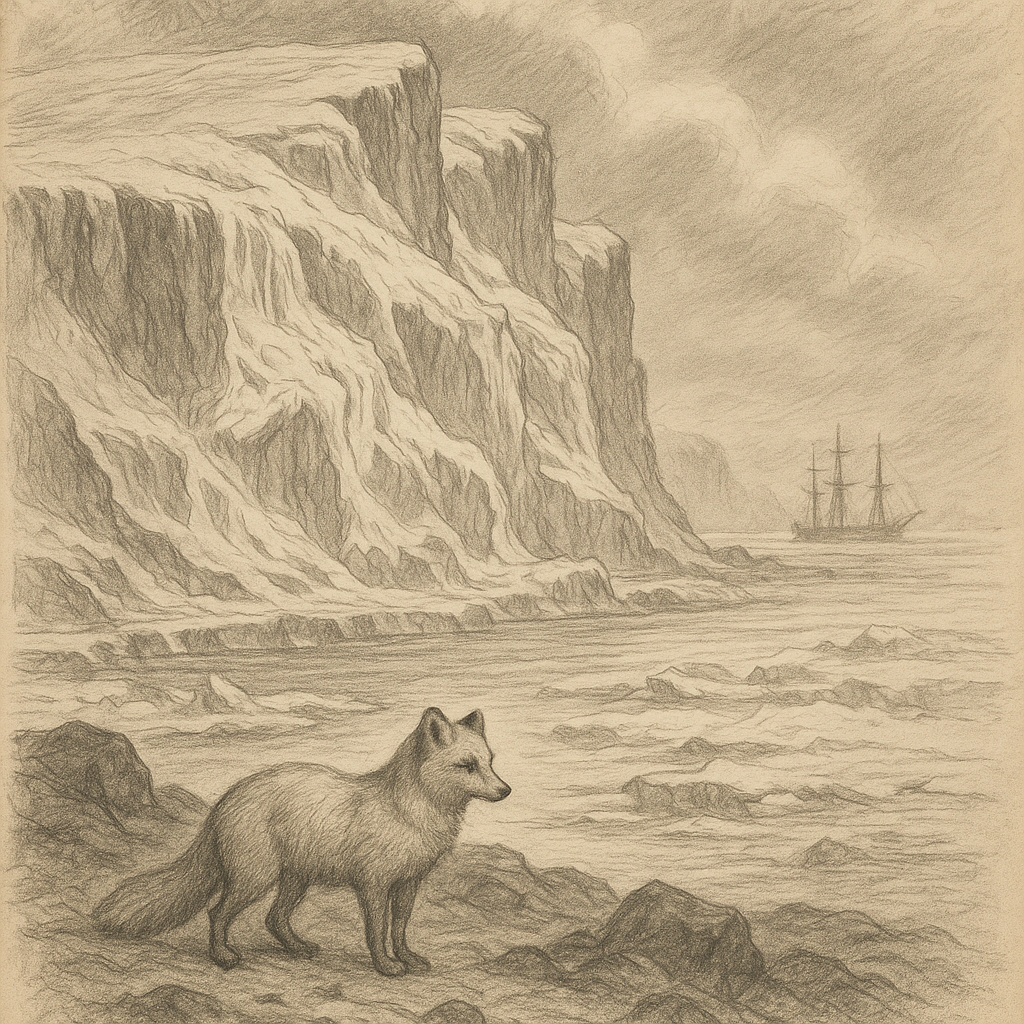Bennett Island: A Remote Arctic Enigma
Bennett Island is a remote and largely uninhabited island located in the East Siberian Sea, part of the Russian Federation. Despite its isolation and harsh Arctic climate, the island has long fascinated explorers, scientists, and even conspiracy theorists with its mysterious history and startling geographic features.
Location and Geography
Bennett Island is part of the De Long Islands, a subgroup of the New Siberian Islands, situated in the far northeastern reaches of Russia. It lies about 960 kilometers north of the Siberian mainland and roughly 150 kilometers north of Zhokhov Island. The island is located at approximately 76°N latitude and 149°E longitude, placing it well within the Arctic Circle.
The island measures about 97 square kilometers in area, with rugged terrain dominated by cliffs, ice caps, and rocky plains. The highest point on the island reaches about 426 meters above sea level, making it the highest peak in the De Long Islands group. A significant portion of the island is covered by glaciers and permanent ice sheets, contributing to its stark and striking landscape.
Geological Origins and Features
Bennett Island is of volcanic origin, formed as part of the complex geologic history of the Arctic Ocean seabed. Geological studies suggest that the island’s foundation consists primarily of Cretaceous-period sedimentary and volcanic rocks. In more recent times, glacial activity has shaped its surface, and permafrost dominates the subsoil conditions.
More notably, Bennett Island is often cited in academic discussions regarding paleoclimate and Arctic tectonics. Ice core and sediment analyses from the island have given valuable insight into climate changes over millennia, making it an important yet challenging site for scientific expeditions.
Climate and Ecological Uniqueness
Due to its high Arctic position, Bennett Island experiences an extremely cold polar climate. Winters are long and severe, with temperatures plunging well below -30°C, while short summers barely bring the temperature above freezing. The island is frequently shrouded in fog, particularly during the transitional seasons, and strong winds are common year-round.
Despite its harsh environment, Bennett Island harbors unique Arctic flora and fauna. Mosses, lichens, and some cold-resistant grasses survive during the short growing season. Wildlife includes polar bears, Arctic foxes, and migratory seabirds such as puffins and guillemots. The surrounding icy waters are habitats for seals and occasional walrus herds, while whales, including bowheads and belugas, may be spotted in the nearby seas.
Historical Significance
Bennett Island was discovered in 1881 by American explorer George W. De Long during the ill-fated Jeannette Expedition. The island was named in honor of James Gordon Bennett Jr., the publisher of the New York Herald, which sponsored the expedition. After the loss of the Jeannette ship to ice, De Long and his crew made their way over the ice to seek land, eventually reaching Bennett Island.
Only a few of the crew members survived to tell the tale, making the discovery of the island both a geographical and a tragic historical event. Since then, Bennett Island has remained largely uninhabited and rarely visited, except for occasional Russian scientific expeditions.
Scientific Interest and Research Expeditions
Due to its glacial cover and sedimentary formations, Bennett Island is of ongoing interest to geologists, glaciologists, and climate scientists. Research teams have visited the island to extract ice cores, document flora and fauna, and study the structure of Arctic permafrost. The island’s relative isolation and minimal human impact make it an ideal location for studying natural Arctic processes with minimal anthropogenic interference.
In recent years, the melting of Arctic sea ice has slightly increased access to the area, potentially allowing for more frequent research missions. However, the island remains a difficult and costly destination due to extreme weather, drifting ice, and remoteness.
Curiosities and Unexplained Phenomena
Bennett Island has garnered intrigue from more than just scientists. In the early 20th century, reports from Soviet aerial surveys suggested the presence of thermal anomalies on the island, including signs of geothermal activity, which seemed unusual given its Arctic location. Speculation about unexpected warmth or even an undiscovered active volcano led to numerous theories, although later studies attributed such observations to optical illusions caused by atmospheric conditions.
Additionally, satellite photographs have sometimes shown mysterious spots where snow and ice appear melted in unusual patterns. These anomalies continue to spark interest and debate among amateur explorers and Arctic enthusiasts.
Legends and Myths Surrounding the Island
Over the years, Bennett Island has found its way into Arctic folklore and speculative theories. Russian explorers of the early 20th century occasionally mentioned the idea that the island might harbor underground geothermal sources or be the tip of a hidden landmass still largely unexplored.
More fantastical tales have suggested that Bennett Island is part of a “phantom land” that appears and disappears from maps—an echo of earlier beliefs in unknown continents hiding in the Arctic. Some cryptic legends and fringe theories even go as far as to claim the island is linked to the myth of Hyperborea, a fabled northern paradise pushed out of memory and reality.
While these stories remain unproven and lack scientific merit, they add a layer of mystery to an already enigmatic island. The harsh, alien landscape and limited human presence make it easy to see why legends flourish in such a setting.
Access and Visitation
Today, Bennett Island remains under the administration of the Russian Federation and is part of the Sakha Republic (Yakutia). It is not open to the public and is rarely visited due to difficult weather conditions, logistical challenges, and its extreme remoteness. Entry is generally limited to authorized scientists and military personnel, often arriving via icebreaker or specialized aircraft during short seasonal windows.
Due to its fragile Arctic ecosystem, any human presence requires careful environmental precautions. Long-term conservation strategies are limited by access issues, but the island is recognized for its valuable ecological and geological data.
Conclusion
Bennett Island stands as a testament to the extreme beauty and mystery of the Arctic. Isolated by endless ice and harsh winds, it offers both scientific insight and a vivid reminder of the dangers and wonders that come with exploring Earth’s final frontiers. Whether as a site of geological research or the heart of enduring legends, Bennett Island continues to captivate those who seek to understand the farthest reaches of our world.



